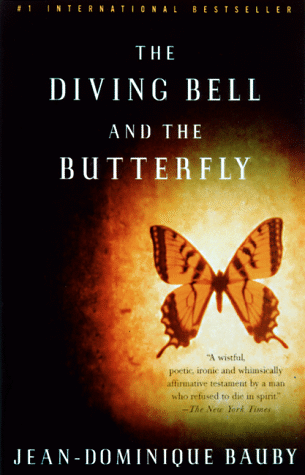
Published April 20, 2006
Easter Sunday, my Mom, otherwise known as “Nanny” to all her grandchildren, sat my daughters down in the living room and presented them with a large bag wrapped as a present. I was cooking dinner for everyone and could see what the fuss was all about. Through the plastic bag, I saw the familiar pastel polka dotted boxes. Inside those boxes were memories spanning over five decades. My 37 year old sister, Trish whined with envy. Nanny was ready to part with her Storybook dolls. My daughters carefully opened each box which contained their grandmother’s treasured memories. We knew the value in this gift. It was a gift of love to her granddaughters.

Nancy Ann Storybook dolls are sweet little dolls which measure from three and a half inches to seven inches in height. They made their debut in the mid thirties and were manufactured well into the early 1960s. When I researched the history of the dolls my mother cherished as a child, I found a history of another remarkable woman, their creator.
Nancy Ann Abbott, the creator of the Storybook dolls, was born in San Francisco in 1901 as Rowena Haskin. As a child she had a fondness for dolls that lasted her entire life. Before becoming a doll maker, she worked in Hollywood as an actress and as a dress designer for various actresses. Later on, her doll dresses would take on the designs of the full-size costumes she made for Hollywood.
After her career in Hollywood, Miss Abbott returned to San Francisco in 1935, where she opened a bookshop. She later met Les Rowland who became her business partner for Nancy Ann Storybook dolls. Miss Abbott made and dressed her dolls to sell at the book store. The dolls sold well and in 1936, a new company was formed, otherwise known as the Nancy Ann Dressed Dolls Company. Mr. Rowland became a partner in the Nancy Ann Company in 1937. The company's name became the familiar Nancy Ann Storybook Dolls, Inc. in 1945. My mom was born the day after Pear Harbor was attacked and grew up during the era of the Storybook doll era, much as I grew up in the Barbie doll era. My mom took care of her dolls all her life…many still have the boxes and literature that came with each little doll.
Nanny’s dolls are lavishly costumed in the best fabrics and trims and follow a theme depending on the series they were released in. The fairytale series released dolls like “When She was Good, She was Very Good”, and “Roses are Red, Violets are Blue”. The Bridal series dolls had a bride, groom, ring-bearer and flowergirl dolls. My favorites were dolls for First Holy Communion and Christening. Dolls of the month are garmented in clothing representing the seasons. The dolls of the Day were typically given at birthdays. I like to imagine my Aunt Margaret Ann giving my mom one for her birthday and the happiness it must have brought her to see the joy on my mom’s face as she added yet another Nancy Ann doll to her collection. There was a nun doll too. She had a black habit and hanging crucifix around her waist.
The dolls were first produced in painted bisque and each had hand-painted rosebud lips and long eye lashes. Later, the eyes were made into sleepers (they could open and close when the dolls were reclined) and the limbs were positional. The hats and bonnets had real feathers and many of the props the dolls had attached to them were carefully detailed. Even though the dolls are plastic, they are made of a hard material which is unbreakable and mimics a porcelain finish.
While the doll bodies were manufactured in Japan in the early 30’s, the company became so successful in the bookstore sales, that it eventually set up it’s own manufacturing plant in Berkeley, California in the early 40’s during the second World War. The dolls sold extremely well. From Emporium Department store in San Francisco to Harrod’s of London, the Nancy Ann Storybook dolls enjoyed national and international success well into the late 1950’s as the highest volume doll manufacturer in the United States during that time.
After Barbie made her debut, the Storybook dolls faded away, giving way to longer, sleeker, more sophisticated looking dolls. In a sense, it was the end of an era not realized again. The innocence in doll making gave way to sexually charged dolls who had cars, boyfriends and skimpy bathing suits. As far as present day doll manufacturing, I shudder to think that little girls are given dolls called Bratz™. In some sense one wonders if the toys reflect the attitudes of the times. One exception to this would be the American Girl Dolls™ which have revitalized an interest in history and story telling.
Miss Nancy Ann (Haskins) was diagnosed with cancer not long after Barbie came onto the scene and Roland fell ill around the same time. Rowena Haskins succumbed to her illness in August 1964. Without her, the company failed and declared bankruptcy in 1965.
Nanny has spent a good deal of the last six months taking care of our Dad, Pop Pop and she, like Nancy Ann Abbott, saw her share of joys and sorrows in her life. Giving these dolls to her granddaughters was a gift of herself. As my daughters make plans as to how they will display Nanny’s precious dolls, I reflect once again on what must have been the joy my mother experienced in collecting these beautiful little treasures, which were the vision of a little San Francisco girl, who like my mom, loved the beauty of innocent sweet little dolls. I hope I live to see the day when they are passed on to Nanny’s Great Grand Daughters.
Tammy Maher is a resident of El Dorado Hills and a bi-weekly columnist for the Mountain Democrat. You can reach her by email at familyfare@sbcglobal.net







